6 BEST Traditional Foods In Morocco | TOP Guide (2023)
Morocco is renowned for its rich culinary heritage, which reflects a blend of Arab, Berber, and Mediterranean influences. The country's vibrant and diverse cuisine is a feast for the senses, with aromatic spices, flavorful tagines, and delightful pastries.
Traditional Foods In Morocco
In this guide, we'll delve into the traditional foods of Morocco, highlighting some iconic dishes that you must try during your visit.
1. Tagine: A Culinary Icon
- Tagine: Tagine refers to both the cooking vessel and the slow-cooked stew that it produces. This iconic dish features a flavorful combination of meat (such as lamb, chicken, or beef), vegetables, aromatic herbs, and spices. The slow cooking process in a cone-shaped tagine pot allows the flavors to meld together, resulting in tender and succulent dishes bursting with Moroccan flavors.
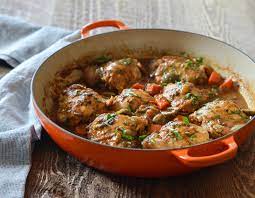
2. Couscous: A Staple Dish
- Couscous: Couscous is a staple dish in Moroccan cuisine and is often considered the national dish. It consists of tiny grains made from semolina, typically steamed and served with a flavorful meat or vegetable stew. Couscous can be accompanied by a variety of ingredients, such as roasted vegetables, raisins, chickpeas, and tender meat, creating a delicious and satisfying meal.
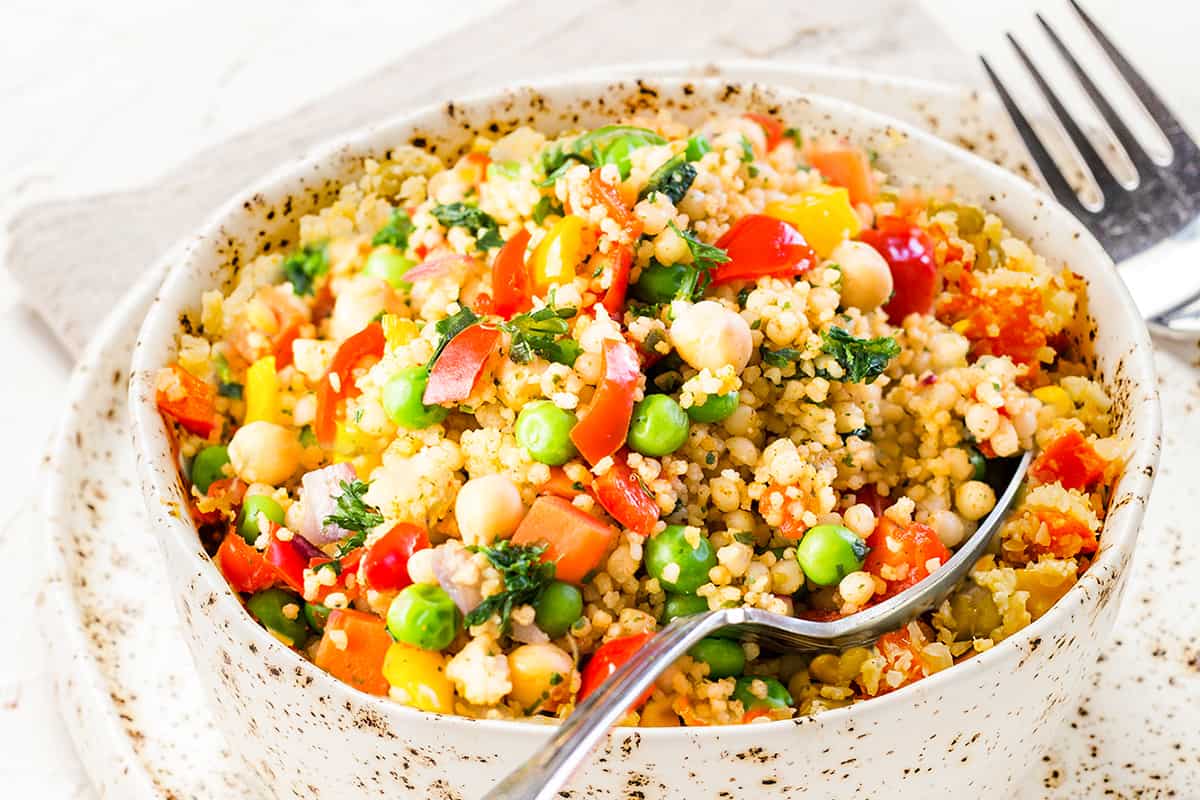
3. Moroccan Mint Tea: A Refreshing Tradition
- Moroccan Mint Tea: Mint tea, known as "Atay B'Nana" in Moroccan Arabic, is a ubiquitous beverage in Moroccan culture. This refreshing and aromatic drink is made with green tea, fresh mint leaves, and sugar. The tea is brewed and poured ceremonially, with the host often serving multiple rounds to guests. Moroccan mint tea is a symbol of hospitality and is enjoyed throughout the day.
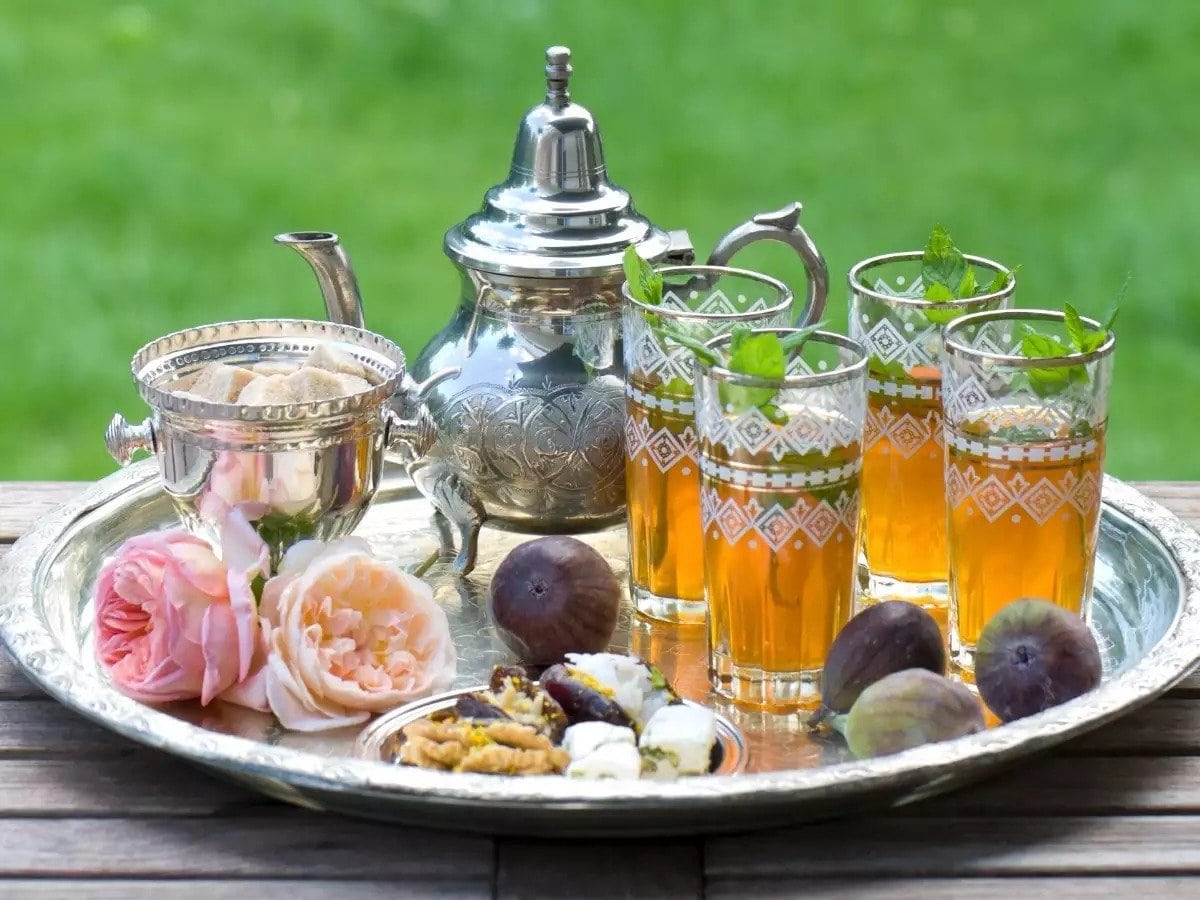
4. Pastilla: A Delicate Pastry
- Pastilla: Pastilla, also known as "Bastilla," is a sweet and savory pastry that showcases the exquisite blend of Moroccan flavors. Traditionally, it is filled with shredded chicken or pigeon meat, almonds, eggs, and a delicate blend of spices. The filling is encased in layers of thin, flaky pastry and baked to perfection. Pastilla is a true delicacy, combining sweet and savory flavors uniquely and delightfully.
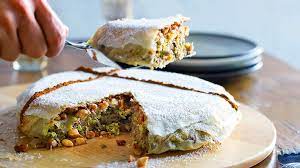
5. Harira: Hearty and Nourishing Soup
- Harira: Harira is a traditional Moroccan soup often enjoyed during the holy month of Ramadan, but it is also served throughout the year. This hearty soup is made with tomato-based broth, lentils, chickpeas, aromatic herbs, and spices. It is often enriched with lamb or beef and sometimes includes noodles or rice. Harira is not only delicious but also provides nourishment and energy during fasting periods.
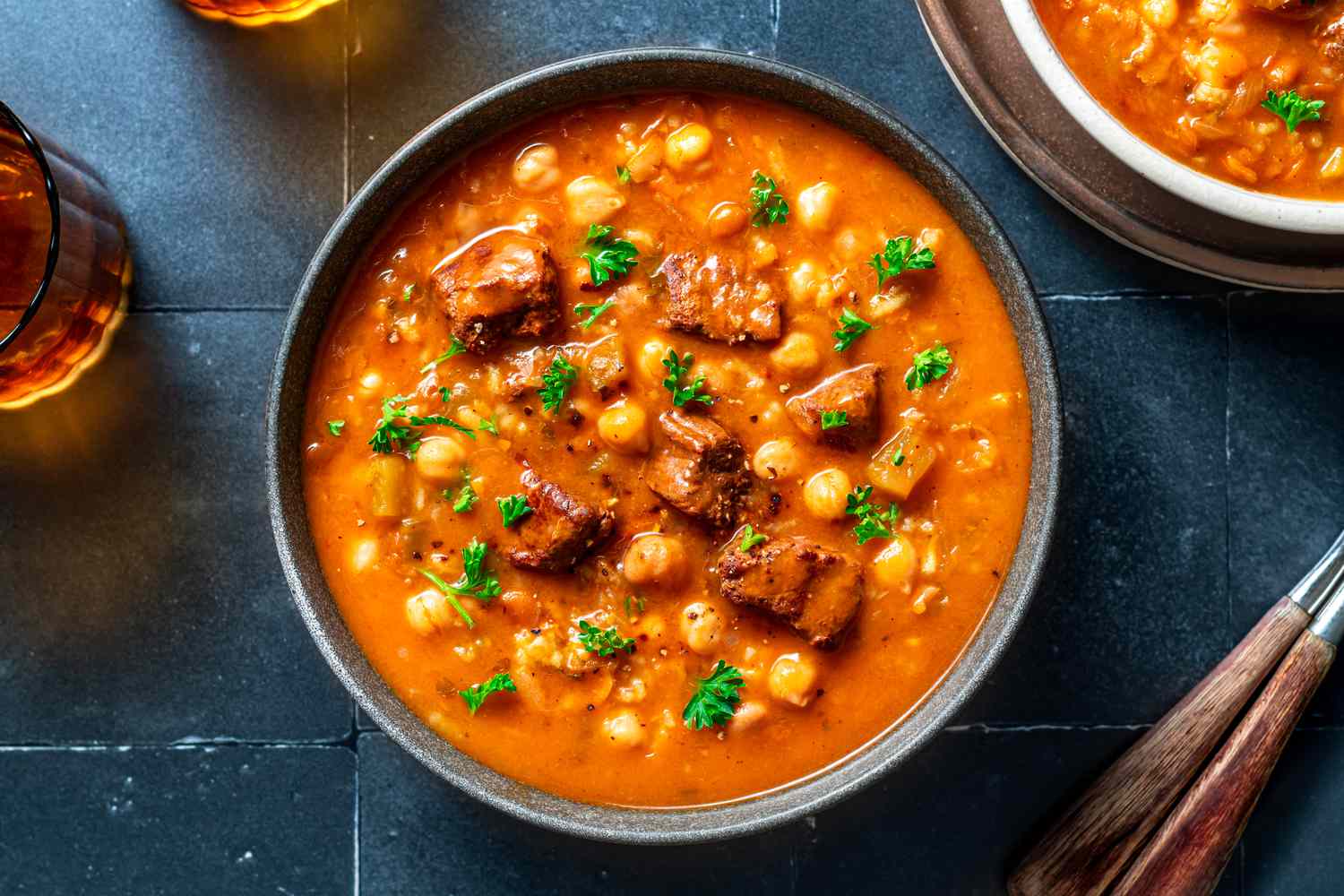
6. Moroccan Sweets: A Sweet Ending
- Moroccan Sweets: Moroccan cuisine is renowned for its array of delightful sweets and pastries. From the sticky and sweet honey-soaked pastries like "Harcha" and "Chebakia" to the delicate almond-filled "Ghriba" cookies, Moroccan sweets offer a burst of flavors and textures. These treats are often enjoyed with a cup of Moroccan mint tea and make for a memorable ending to a Moroccan meal.
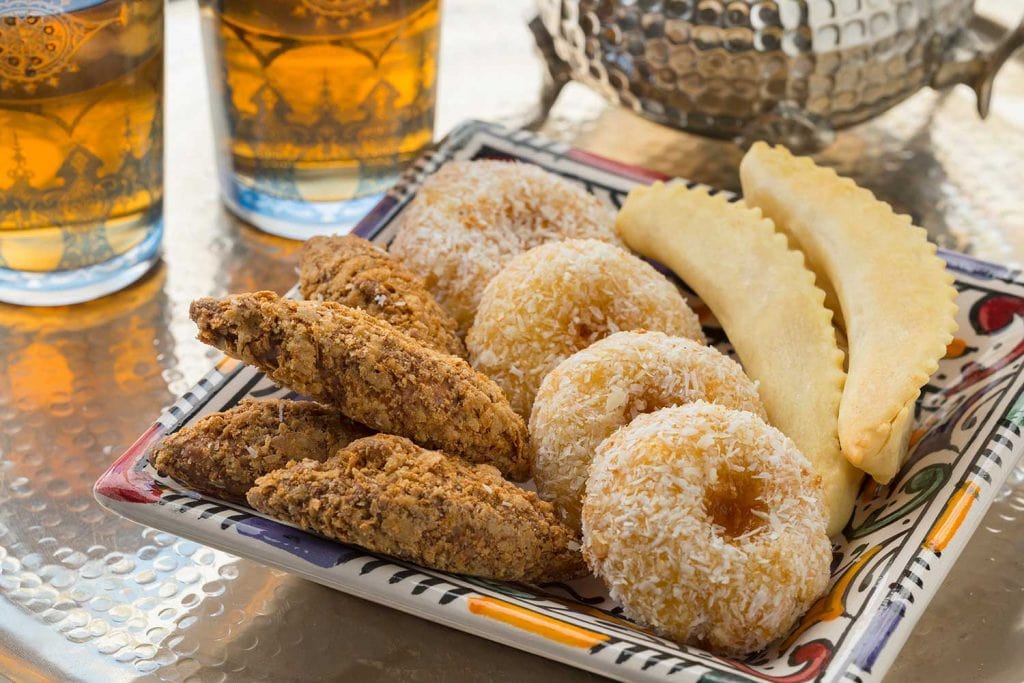
What is Morocco's most-known food?
One of the most well-known and iconic foods in Morocco is couscous. Couscous is considered the national dish of Morocco and is widely recognized and enjoyed both within the country and abroad. It is a staple in Moroccan cuisine and holds significant cultural and historical importance.
Couscous is made from tiny grains of semolina, which are steamed and fluffed to create a light and fluffy texture. It is typically served with a flavorful meat or vegetable stew, known as "seffa" or "tfaya," and can include ingredients like tender meat (such as lamb or chicken), vegetables, chickpeas, and a blend of aromatic spices.
What sets Moroccan couscous apart is not only the taste but also the traditional method of preparation. It involves steaming the couscous multiple times in a special pot called a "couscoussier" to achieve the desired texture and flavor. This labor-intensive process adds to the authenticity and charm of the dish.
Couscous is often enjoyed during family gatherings, festive occasions, and religious celebrations. It brings people together and represents the warmth of Moroccan hospitality. The combination of fluffy couscous grains and flavorful accompanying stew creates a harmonious and satisfying meal that has gained popularity worldwide.
Due to its widespread recognition and appreciation, Moroccan couscous is not only a beloved dish in Morocco but has also become a symbol of Moroccan cuisine internationally. It is featured on the menus of many Moroccan restaurants around the world and has become a favorite among food enthusiasts seeking to experience the flavors of Morocco.
What are the traditions in Morocco?
Morocco is a country with a rich cultural heritage and diverse traditions that are deeply rooted in its history, religion, and social customs. Here are some prominent traditions observed in Morocco:
- Islamic Traditions: The majority of Moroccans practice Islam, and Islamic traditions play a significant role in daily life. The call to prayer (adhan) is heard from mosques throughout the day, and Friday is observed as the day of congregational prayer. During the holy month of Ramadan, Muslims fast from sunrise to sunset and break their fast with a meal called iftar.
- Hospitality: Moroccans are known for their warm hospitality and welcoming nature. It is customary for guests to be treated with generosity and offered tea or coffee upon arrival. Inviting guests into one's home and sharing meals is a common practice, reflecting the importance of hospitality in Moroccan culture.
- Traditional Clothing: Traditional Moroccan clothing varies across regions and reflects the country's diverse cultural influences. The djellaba, a loose-fitting, hooded robe, is commonly worn by both men and women. Women may also wear the kaftan, a long, flowing gown, often adorned with intricate embroidery and embellishments.
- Festivals and Celebrations: Morocco celebrates a variety of religious and cultural festivals throughout the year. These include Eid al-Fitr (marking the end of Ramadan), Eid al-Adha (the Feast of Sacrifice), and the Islamic New Year. Additionally, local festivals and events are held to celebrate music, dance, folklore, and traditional arts in different regions of the country.
- Berber Traditions: Morocco is home to a significant Berber population, and Berber traditions are an integral part of the country's cultural fabric. Berber communities maintain their distinct language, customs, and traditional practices, such as music, dance, and crafts. The Amazigh New Year, known as Yennayer, is celebrated by Berbers as a cultural and historical event.
- Artisan Crafts: Morocco is renowned for its traditional craftsmanship. Various regions specialize in specific artisan crafts, including pottery, carpet weaving, metalwork, woodwork, leatherwork, and embroidery. These skills are often passed down through generations and contribute to the preservation of traditional Moroccan craftsmanship.
- Henna: The art of applying henna is a popular tradition in Morocco, particularly for special occasions such as weddings and festivals. Intricate henna designs are applied to the hands and feet, symbolizing blessings, beauty, and good luck.
These are just a few examples of the traditions that are observed in Morocco. The country's cultural mosaic and diverse regional influences contribute to a rich tapestry of customs and practices that make Morocco a unique and fascinating destination.
What is the traditional dress of Morocco?
The traditional dress of Morocco reflects the country's rich cultural heritage and varies across regions and communities. Here are some notable traditional garments worn in Morocco:
- Djellaba: The djellaba is a long, loose-fitting robe with a hood. It is worn by both men and women, although there are some variations in style and design. Djellabas are typically made from lightweight fabrics for warm weather and heavier materials for colder climates. They can be plain or adorned with decorative embroidery or patterns.
- Kaftan: The kaftan is a long, flowing gown that is often worn by women on special occasions, such as weddings or festivals. It is made from luxurious fabrics and embellished with intricate embroidery, beadwork, or metallic thread. Kaftans come in various colors and styles, with different regions of Morocco having their unique designs.
- Jabadour: The jabadour is a traditional dress worn by women in certain regions of Morocco, particularly in rural areas. It consists of a long-sleeved blouse and a skirt or dress that is often brightly colored and decorated with geometric patterns or floral motifs.
- Gandora: The gandora is a loose-fitting, knee-length tunic that is worn by both men and women. It is usually made from lightweight fabrics and is commonly seen in rural areas. The gandora may be plain or adorned with simple embroidery.
- Fez: The fez is a distinctive hat that is often associated with Moroccan attire. It is a red, cylindrical-shaped cap made from felt, typically adorned with a tassel at the top. Although the fez is less commonly worn in modern times, it still holds cultural and historical significance.
It's important to note that contemporary fashion trends have also influenced Moroccan attire, particularly in urban areas. Many Moroccans today wear modern clothing styles similar to those found in other parts of the world. However, traditional garments continue to be valued for special occasions, cultural events, and as a connection to Moroccan heritage.
What are 5 interesting facts about Morocco?
Here are five interesting facts about Morocco:
- Geographical Diversity: Morocco boasts a diverse geography that encompasses mountains, deserts, coastlines, and fertile plains. It is home to the Atlas Mountains, the Sahara Desert, and a coastline along the Atlantic Ocean and the Mediterranean Sea. This diverse landscape offers a range of outdoor activities and breathtaking natural beauty.
- Multilingual Society: While Arabic is the official language of Morocco, the country has a multilingual society. Many Moroccans also speak Amazigh (Berber), which is an indigenous language with multiple dialects. Additionally, French is widely spoken and serves as a second language due to Morocco's colonial history.
- Medina of Fez: Fez is home to one of the world's oldest and largest medieval cities, known as the Medina of Fez. It is a UNESCO World Heritage site and is famous for its maze-like streets, traditional architecture, and vibrant markets. Exploring the narrow alleyways and experiencing the rich history and culture within Medina is a fascinating journey.
- Film Industry: Morocco has been a popular filming location for many international movies and TV shows. Its unique landscapes, ancient cities, and well-preserved historical sites have attracted filmmakers from around the world. Films like "Gladiator," "Lawrence of Arabia," and TV series like "Game of Thrones" have utilized Morocco's diverse locations for their productions.
- Cuisine and Spice Markets: Moroccan cuisine is renowned for its rich flavors and aromatic spices. The country's spice markets, known as souks, are vibrant and bustling places where locals and visitors can explore a wide array of colorful spices, herbs, and other culinary delights. These markets offer a sensory experience and are a treasure trove for food enthusiasts.
These are just a few interesting facts about Morocco, but the country offers much more to discover, including its ancient history, vibrant festivals, and cultural traditions.
Conclusion
Moroccan cuisine is a treasure trove of flavors, spices, and culinary traditions. Exploring the traditional foods of Morocco allows you to experience the rich tapestry of tastes and aromas that define the country's gastronomy. Whether you savor a fragrant tagine, enjoy a steaming bowl of couscous, or indulge in a sweet Moroccan pastry, the culinary delights of Morocco are sure to leave a lasting impression on your taste buds.
Share
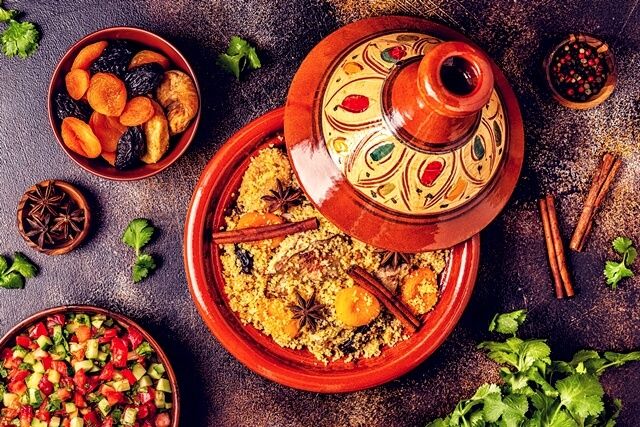






Comments